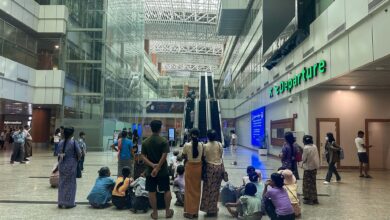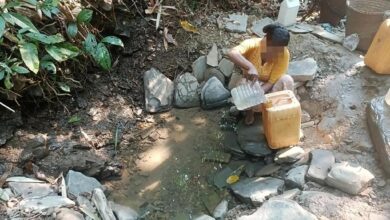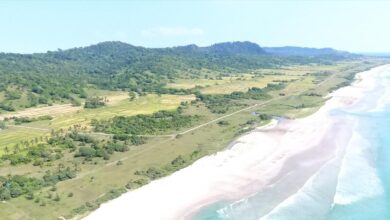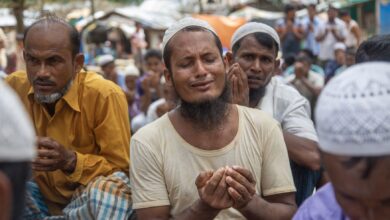
Eight prisoners made a break for it, ignoring the pain in their emaciated bodies as they sprinted from the labour camp in Kabaw Valley in Myanmar’s northern Sagaing Region.
They didn’t get far. A rabble of guards and deputised inmates pursued them, picking them off in the barren fields that surrounded the camp and beating them mercilessly.
Four of the would-be escapees died. The rest, put back to work in shackles despite their severe injuries, wished they had. “Just kill us, we can’t work anymore,” one of them begged.
U Tin Aung, a prison officer at the Sayar San prison camp during the killings in 2001, saw the whole thing. “I could only watch,” he told Myanmar Now. “I didn’t have the authority to give them a break.”
The four men were among 357 who died at the camp that year, Tin Aung said. Thousands more perished under torturous conditions in Myanmar’s prison labour camps before the number of fatalities began to fall around the start of political reforms in 2011.
While the previous government disclosed some details about the camps, officials have remained evasive about the real reasons so many died.
But an investigation by Myanmar Now reveals for the first time an account of the horrors that unfolded within the gulag-like compounds from those who helped to oversee them.
They describe inmates perishing en masse from severe exhaustion, vicious beatings, and starvation at camps with no access to medical staff to treat the inevitable onset of disease.
Men used as cattle
The investigation – based on interviews with current and former prison officers, senior prison department officials, ex-inmates and village elders – also offers evidence that officials recorded false or incomplete causes of death on their paperwork in an attempt to hide the fact inmates had died from mistreatment amounting to torture.
U San Bala, who was administrator of Yazagyo village in Sagaing Region from 1999 to 2003, had to sign as a witness every time an inmate died at the nearest of two prison camps in the area.
The two Yazagyo compounds, along with Sayar San, were among seven agricultural labour camps in Sagaing Region, each holding hundreds of prisoners.
During his first year as administrator “there wasn’t a day without death”, San Bala said. “Sometimes the number rose to six bodies a day.”
“They gave the causes of death as diarrhoea, dysentery or another illness, but most of the prisoners were tortured to death,” he added, referring to the backbreaking forced labour and relentless beatings that inmates endured.
“They were asked to line up before starting work. They had to plant seedlings, and if a prisoner was slow, he was hit with a big stick.”
At one point San Bala wondered aloud to prison officials about how so many could die from dysentery and diarrhoea. “It isn’t this bad in the village,” he told them. “This is normal for us,” an official replied.
In 2014, then deputy home affairs minister U Kyaw Kyaw Tun admitted that more than 5,000 had died in the labour camps since 1978.
He failed to mention that prisoners were overworked, beaten and starved, instead blaming the deaths on “unhealthy lifestyles and accidents” as well as cold weather.
Prison department deputy director U Min Htun Soe, however, was more open about the inhumane working conditions.
Many died for want of medicine and because “prisoners were used in place of cattle and bulls to plough the fields”, he told Myanmar Now.
Myanmar Now was unable to verify the figure given by Kyaw Kyaw Tun because the ministry refused or ignored multiple requests to provide a breakdown showing when and at which camps the deaths happened.
Whatever the true toll, it is likely that deaths began to soar from the early 1990s, when Senior General Than Shwe ordered the construction of some of the most notorious camps.

‘Mental and physical improvement’
In May 1991, around two-dozen guards from Monywa Prison in Sagaing Region herded 300 inmates onto a boat and set sail along the Chindwin River, towards the Indian border.
These were the guinea pigs for a nativist scheme cooked up by Than Shwe to defend Myanmar’s porous land border from the effects of illegal migration.
The plan was to bolster the population along the frontier by building agricultural labour camps. Prisoners were to convert wastelands to farms in and around the sparsely populated Kabaw Valley, whererocky ground and infertile soil presented a gruelling obstacle.
After serving their sentences inmates would get land and cattle in exchange for settling in the region, Prisons Department documents seen by Myanmar Now stated.
While the scheme was overambitious, the consequences would have been far less deadly had generals not ordered the camps to meet unattainable targets for producing rice, said U Zaw Htun, who was deputy director-general of the Prisons Department for over a decade before retiring in 2014.
“The targets forced prisoners to overwork,” he told Myanmar Now, adding that the absence of healthcare also contributed to the high death rate.
Because the camp was unable to produce enough rice, he said, prisoners were sent into the forest to harvest rattan to sell. Camp officials would then use the money they raised to buy rice that they would pass off to superiors as their own harvest, he added.
The generals setting the targets were keen for inmates whose labour was being “wasted” to help cover the costs of running the country’s prisons by working in mines and on farms.
In 1998, an internal government notice explained how the Bawa Thit – or “New Life” – agricultural production camps in Sagaing were among those expected to raise revenues and contribute to rice stocks for the Prisons Department.
But the camps, the notice added, also had another purpose: to “mentally and physically improve the prisoners and build new lives for them”.

‘All skin and bone’
The 300 inmates who sailed from Monywa in 1991 were put to work building the Oak Pho Kanbaung camp near the town of Tamu, the first of the Bawa Thit facilities.
At the time, Tin Aung was working at Monywa prison, where he was put in charge of managing logistics for the camp from a distance. The budget he was given for food, he said, was miserly.
“If it was worth K300, the government would only give us K100,” he said. His superiors suggested he buy meat but the budget was so tight “there was no way we could”.
Before long, wardens at the Bawa Thit camps began sending sick inmates back to Monywa and other prisons. “The returning prisoners were all skin and bone, their bodies were covered with scabies. They died as soon as they got there,” he said. “Arrive today, die tomorrow.”
More than 600 sick and starving inmates were also sent back to the prison in Kalay in 2001, said U Khin Maung Myint, a prison officer there at the time. Five hundred of them died.
“They looked like skeletons covered in skin,” he said. “Their BMIs [body mass indexes] were too low for them to survive.”
It is unclear if the government’s estimate of the number of deaths at Myanmar’s labour camps covers only those who died on site, or if it also takes account of those who died after being transferred. The former would drastically underestimate the true toll.

Prisoners become guards
Ko Ye Htun was, relatively speaking, one of the lucky ones.
He was sent to the second of the two camps at Yazagyo in 1999 after being caught in Mandalay buying and selling electric meter boxes without a licence, and helping people to illegally connect to the power grid.
It was December when he arrived to serve part of his six-month sentence, and the weather was frigid. He was sent every day with nine other inmates to climb a mountain and collect firewood for the entire camp, which held around 300 people.
“If we weren’t able to get enough wood we were beaten on the gravel road,” he said. “I was beaten 20 or 30 times when I first arrived.” The firewood was never enough, and Ye Htun couldn’t keep the cold out at night.
He survived on a starvation diet. A typical meal was a meagre serving of thin, watery soup made with wild leaves and served with a lump of fish paste “the size of a gooseberry”.
“We had to bathe in yellow water,” he added. “We used mountain water for drinking. We drank it without boiling it because we were so thirsty.” If someone got sick one day, he said, they would probably be dead the next.
At times local villagers came to the camp to inform the authorities they had found the bodies of escapees who had died in the jungle.
The prospects of survival inside the camp were little better. “Even on a good day at least two or three people died,” he said. He is sure he would have died too was it not for a chance encounter with the man he credits with saving his life.
Not long after his arrival at the camp, a military officer from the nearby town of Kalay was driving along the road that passed near the compound when his car broke down. Ye Htun, who was good at tinkering with machines, was sent to help, and managed to restart the engine.
To show his gratitude, the officer asked the prison warden to take care of Ye Htun. It seemed clear that he knew people were dying in the camps and hoped to save the man who had fixed his car.
After that, Ye Htun was appointed as an enforcer, a role of relative privilege given to some inmates that involves helping the guards discipline other prisoners. He no longer had to endure the beatings; now it was his job to deliver the blows.
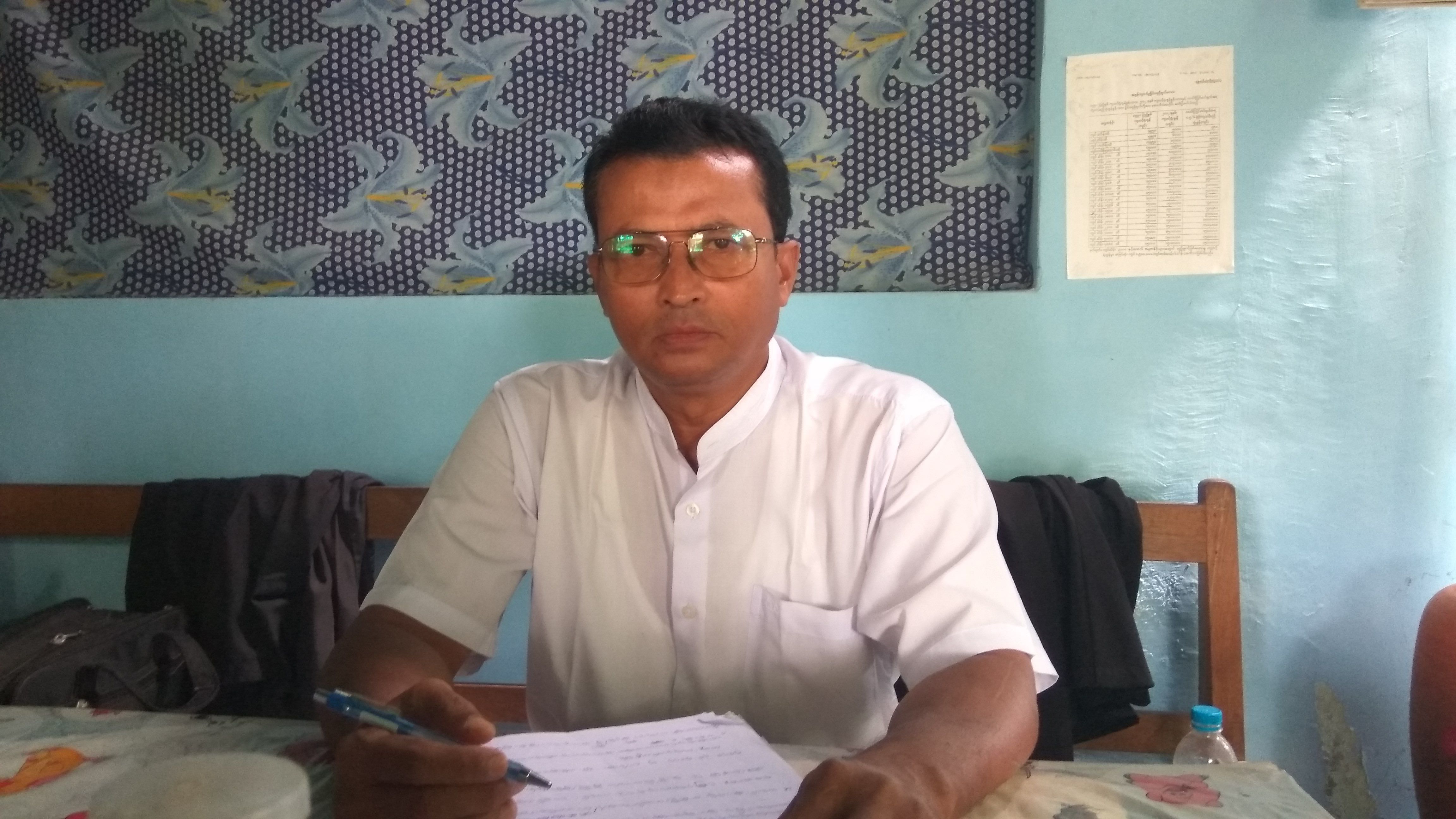
Eating frogs alive
He was spared the unbearable workload too. Men who before toiled beside him now worked under his supervision; inmates who had taken beatings with him now recoiled from the sharp thwack of his stick.
But it was better to be beaten by a sympathetic inmate enforcer that the regular guards who tended to show no mercy, he said. “When they heard that the superintendent was on an inspection round, some inmates would beg me to beat them before he could get to them.”
The systematic violence at the camps was a means of extracting bribes as well a regime of punishment for missed targets. Inmates with families willing and able to pay off prison authorities were given jobs like Ye Htun’s and spared beatings.
Guards worked on the assumption that the harder they beat the men, the more persuasive their pleas to their families to pay the money to spare them would be, said Ye Htun.
Part of Ye Htun’s new role involved manning the prison entrance, where he was tasked with doing paperwork that included recording the deaths of inmates. After he had logged about 60 deaths, he recalls, the superintendent put in a request to the Prisons Department to send more inmates.
“The bodies were buried in a grave at the side of the road,” he said.
On a recent visit to Yazagyo village, San Bala, now 70 years old, showed Myanmar Now a plot of land covered in wild grass where he said prisoners’ bodies were buried.
There was little effort to hide the horrors at the camps from the villagers. In the paddy fields around the prison, starving inmates could at times be seen lunging at small wild animals.
“Some would just pick up these green frogs and eat them raw,” said San Bala, the former village administrator who had to sign as a witness when inmates died. “If they got caught doing it they were beaten.”
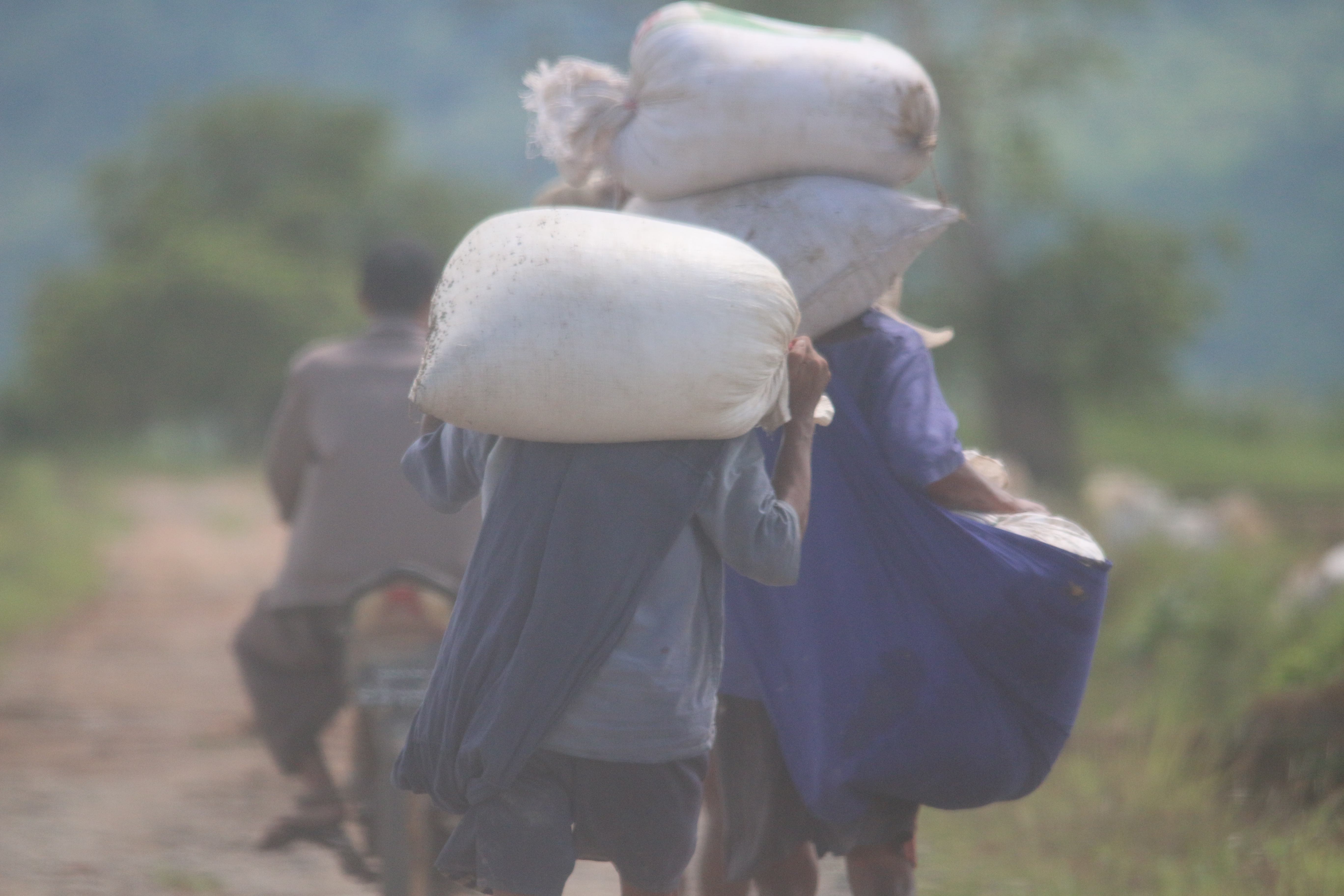
The horrors continue
From 2009, the government increased funding for prisons and instructed wardens to provide more food for inmates. The government also abolished its production targets for the camps. Fatalities began to plummet.
But while the mass death of prisoners during the pre-reform era has begun to fade into history, Myanmar still has 48 labour camps with around 20,000 inmates, according to the Prisons Department. Despite calls for reform, conditions remain torturous.
Men are still forced to work as slaves, often in shackles, and face constant beatings unless they can pay bribes, ex-inmates have told Myanmar Now.
At some camps, prisoners are rented out as labourers to private agribusinesses, with officials collecting the profits. And materials from rock quarries staffed with prison slave labour are sold to well-known local construction companies.
Nor have the deaths stopped entirely. At the 18 camps across Myanmar where prisoners are made to work as miners, being maimed or killed in an accident is a constant threat.
Earlier this year an inmate working in the rock quarry at Inn Byaung camp in Mon State died after falling from a cliff. Two hundred prisoners protested in response, calling for the camp to be closed and inmates to be sent back to regular prisons.
In August last year, a prisoner was grievously injured when a large rock fell onto the lower half of his body and crushed his legs at the same camp.
The prison warden failed to inform the Prisons Department about the incident, but the Myanmar National Human Rights Commission eventually directed the home affairs ministry to take action after receiving a complaint.
Another prisoner narrowly survived having his skull cracked by a falling rock at the Marlar Phu mining camp in Kayin State last June.
He fell into a coma and was taken to Yangon General Hospital, about 270 kilometres away, where surgeons had to remove fragments of skull from his head.
Prison records showed that he was arrested and sentenced to six years after being caught with a single tablet of an unspecified illegal drug.
After he woke from his coma, prison authorities sent him back to finish his sentence at the quarry in Kayin. He was released earlier this year.
Prisons Department deputy director Min Htun Soe said the warden at Marlar Phu camp has been transferred to another facility, while no action has been taken against the warden at the camp where the man had his legs crushed.
Myanmar’s prison labour camps defy several local and international laws.
Under the Prisons Act, inmates are only supposed to be given labour if it forms part of their sentence, but authorities routinely send inmates whose sentences do not include labour to work in the camps.
In May, U Khun Win Thaung, a National League for Democracy lawmaker, took the home affairs ministry to task over the Prison Department’s use of forced and unpaid labour for private enterprises, which violates the Prisons Act as well as international conventions that Myanmar has signed.
In the pre-reform days, there was nobody to speak up on prisoners’ behalf.
When San Bala was administrator at Yazagyo, the villagers did what they could to help the inmates, he said.
Sometimes they would take rice and curry to the camp, and they would occasionally take the risk of harbouring escapees, feeding them and giving them money for transport before sending them on their way.
But there were limits to how far this help could go, he added, and no one dared raise their voice to defend the inmates. “In those days you didn’t talk back.”
–Editing by Joshua Carroll
